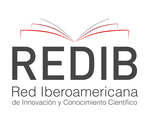Translation and cultural adaptation of the Questionnaire on the Problematic Use of the Internet for the Peruvian population.
DOI:
https://doi.org/10.20453/rnp.v85i3.4328Keywords:
Cyberspace, psychological dependency, young adult, adolescent behaviorAbstract
Objective: To adapt the Problem Internet Use Questionnaire (PIUQ) for its utilization in Peru. Material and Methods: The translation and cultural adaptation of the PIUQ followed a systematic process that involved direct translation, evaluation and judgment by expert committees and back-translation, culminating with the final approval by the scale creators. For each of the 18 items, a first group of experts assessed comprehensibility, acceptability, relevance and quality of the response set in the preliminary version; subsequently, a second group of experts, evaluated clarity, relevance and pertinence in the final version. Aiken’s V was calculated for each of the different features evaluated in the 18 items. Results: In the preliminary version, Aiken’s V had low values for the comprehensibility of items 1, 3, 4, 6 and 16, and for the response set of item 4. The analysis of the first expert committee led to modifications in items 1, 4 and 16 of the obsession dimension, 5 and 8 of neglect, and 15 of control disorder. The evaluation by the second expert committee resulted in adequate Aiken V values for all aspects of the 18 items. Conclusions: The final Peruvian version thus obtained proved to be aligned to the purposes of the original questionnaire, without altering the meaning of the items.
Downloads
References
Marcelo C, Rijo D. Aprendizaje autorregulado de estudiantes universitarios: Los usos de las tecnologías digitales. RECIE. 2019;3(1):62-81.
Pedrero-Pérez EJ, Mora-Rodríguez C, Rodríguez-Gómez R, Benítez-Robredo MT, Ordoñez-Franco A, González-Robledo L, et al. Síntomas prefrontales asociados al uso problemático de las tecnologías de la información y la comunicación (TIC) en adolescentes. Psicol Conductual. 2019;27(2):257–73.
Maqableh M, Alia M. Evaluation online learning of undergraduate students under lockdown amidst COVID-19 Pandemic: The online learning experience and students’ satisfaction. Child Youth Serv Rev. 2021;128:106160. doi: 10.1016/j.childyouth.2021.106160
Instituto Nacional de Estadística e Informática. Estadísticas de las tecnologías de información y comunicación en los hogares. Informe técnico. Lima: Instituto Nacional de Estadística e Informática; 2021. (Citado el 23 de marzo del 2022). Disponible en: https://www.inei.gob.pe/media/MenuRecursivo/boletines/04-informe-tecnico-tic-iii-trimestre-2021.pdf
Chavez A, Vallejos-Flores MA. Diseño y validez de la Escala de Adicción a Instagram de Bergen (BIAS) en adultos peruanos. Propós Represent. 2021;9(1):e973.
Király O, Potenza MN, Stein DJ, King DL, Hodgins DC, Saunders JB, et al. Preventing problematic internet use during the COVID-19 pandemic: Consensus guidance. Comp Psychiatry. 2020; 100: 152180. doi:10.1016/j.comppsych.2020.152180
Organización Mundial de la Salud. CIE-11 para estadísticas de mortalidad y morbilidad. Ginebra: Organización Mundial de la Salud;2022. (Citado el 15 de julio de 2022). Disponible en: https://icd.who.int/browse11/l-m/es#/http://id.who.int/icd/entity/1448597234
Cruzado L, Matos L, Kendall R. Adicción a internet: Perfil clínico y epidemiológico de pacientes hospitalizados en un instituto nacional de salud mental. Rev Medica Hered. 2006; 17(4):196-205. doi:10.20453/rmh.v17i4.879
Shapira NA, Lessig MC, Goldsmith TD, Szabo ST, Lazoritz M, Gold MS, et al. Problematic internet use: Proposed classification and diagnostic criteria. Depress Anxiety. 2003;17(4):207-16. doi:10.1002/da.10094
Demetrovics Z, Szeredi B, Rózsa S. The three-factor model of Internet addiction: the development of the Problematic Internet Use Questionnaire. Behav Res Methods. 2008; 40(2):563–74. doi:10.3758/brm.40.2.563
Lugo-Salazar JK, Pineda-García G. Escala de Adicción a Internet de Lima: Propiedades psicométricas con adolescentes mexicanos. Rev Psicol Clín con Niños Adolesc. 2021; 8(2): 23–8.
Lam-Figueroa N, Contreras-Pulache H, Mori-Quispe E, Nizama-Valladolid M, Gutiérrez C, Hinostroza-Camposano W, et al. Adicción a internet: desarrollo y validación de un instrumento en escolares adolescentes de Lima, Perú. Rev Peru Med Exp Salud Publica. 2011;28(3): 462-469. doi: 10.17843/rpmesp.2011.283.524
Ávila DL, Pardo EL, Muñoz ML. Escala de Adicción al Internet de Lima (EAIL): Análisis psicométrico. RIP. 2019;11(3):103-11. doi: 10.33881/2027-1786.rip.11309
Chahín-Pinzón N. Aspectos a tener en cuenta cuando se realiza una adaptación de test entre diferentes culturas. Psychol Av Discip. 2014;8(2):109–12. doi:10.21500/19002386.1225
Young, K. Internet Addiction: The Emergence of a New Clinical Disorder. CyberPsychol Behav. 1998;1(3): 237-244. doi:10.1089/cpb.1998.1.237
Lin M, Kim Y. The reliability and validity of the 18-item long form and two short forms of the Problematic Internet Use Questionnaire in three Japanese samples. Addict Behav. 2020; 101:105961. doi: 10.1016/j.addbeh.2019.04.019
Kelley KJ, Gruber EM. Psychometric properties of the Problematic Internet Use Questionnaire. Comput Human Behav. 2010;26(6):1838–1845. doi:10.1016/j.chb.2010.07.018
Spritzer DT, Machado W de L, Yates MB, Astolfi VR, Laskoski P, Pessi C, et al. Psychometric properties of the nine-item Problematic Internet Use Questionnaire in a Brazilian general population sample. Front Psychiatry. 2021; 12:660186. doi: 10.3389/fpsyt.2021.660186
Koronczai B, Urbán R, Kökönyei G, Paksi B, Papp K, Kun B, et al. Confirmation of the three-factor model of problematic internet use on off-line adolescent and adult samples. Cyberpsychol Behav Soc Netw. 2011;14(11):657–664. doi: 10.1089/cyber.2010.0345
Gjersing L, Caplehorn JRM, Clausen T. Cross-cultural adaptation of research instruments: language, setting, time and statistical considerations. BMC Med Res Methodol. 2010; 10(1): 13. doi: 10.1186/1471-2288-10-13
Hambleton RK. The next generation of the ITC Test Translation and Adaptation Guidelines. Eur J Psychol Assess . 2001;17(3):164–172. doi: 10.1027/1015-5759.17.3.164
Ramada-Rodilla JM, Serra-Pujadas C, Delclós-Clanchet GL. Adaptación cultural y validación de cuestionarios de salud: revisión y recomendaciones metodológicas. Salud Publica Mex. 2013; 55(1): 57–66.
van Ommeren M, Sharma B, Thapa S, Makaju R, Prasain D, Bhattarai R, et al. Preparing Instruments for Transcultural Research: Use of the Translation Monitoring Form with Nepali-Speaking Bhutanese Refugees. Transcult Psychiatry. 1999; 36(3): 285-301. doi: 10.1177/136346159903600304
Penfield RD, Giacobbi PR Jr. Applying a score confidence interval to Aiken’s item content-relevance index. Meas Phys Educ Exerc Sci. 2004;8(4):213–225. doi: 10.1207/s15327841mpee0804_3
Carvajal A, Centeno C, Watson R, Martínez M, Sanz Rubiales Á. ¿Cómo validar un instrumento de medida de la salud? An Sist Sanit Navar. 2011;34(1): 63-72.doi: 10.4321/s1137-66272011000100007












 RNP is distributed under a
RNP is distributed under a 